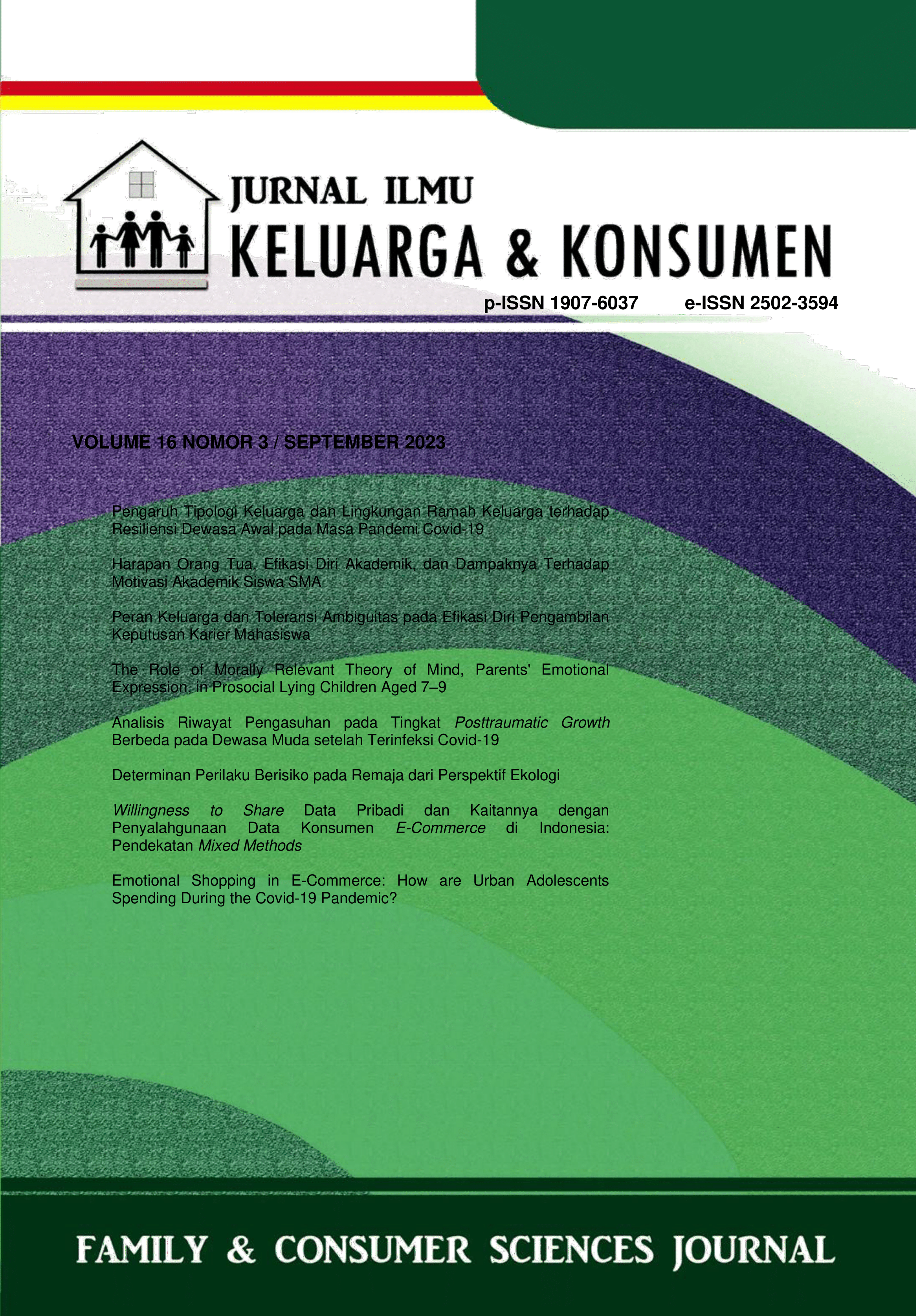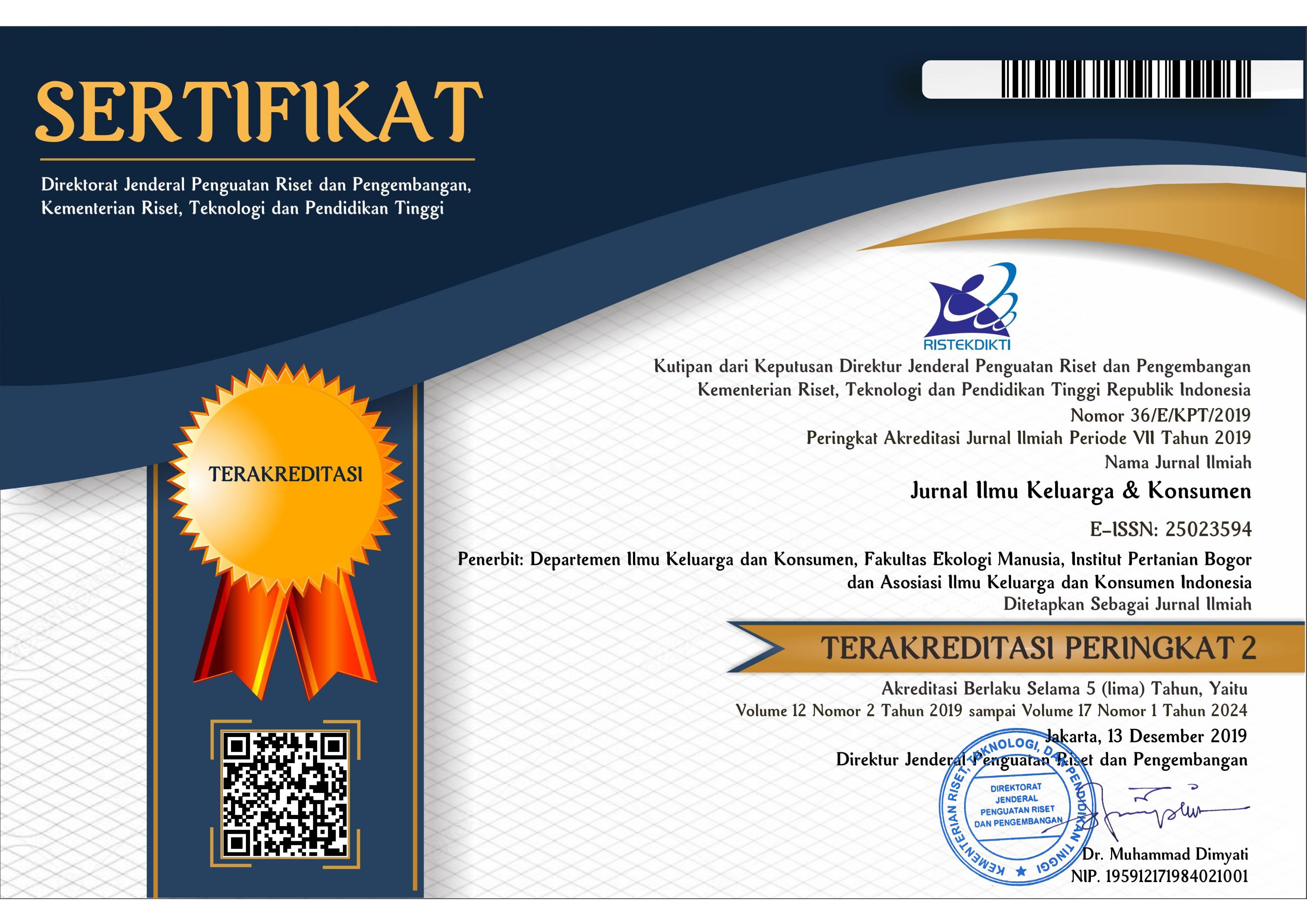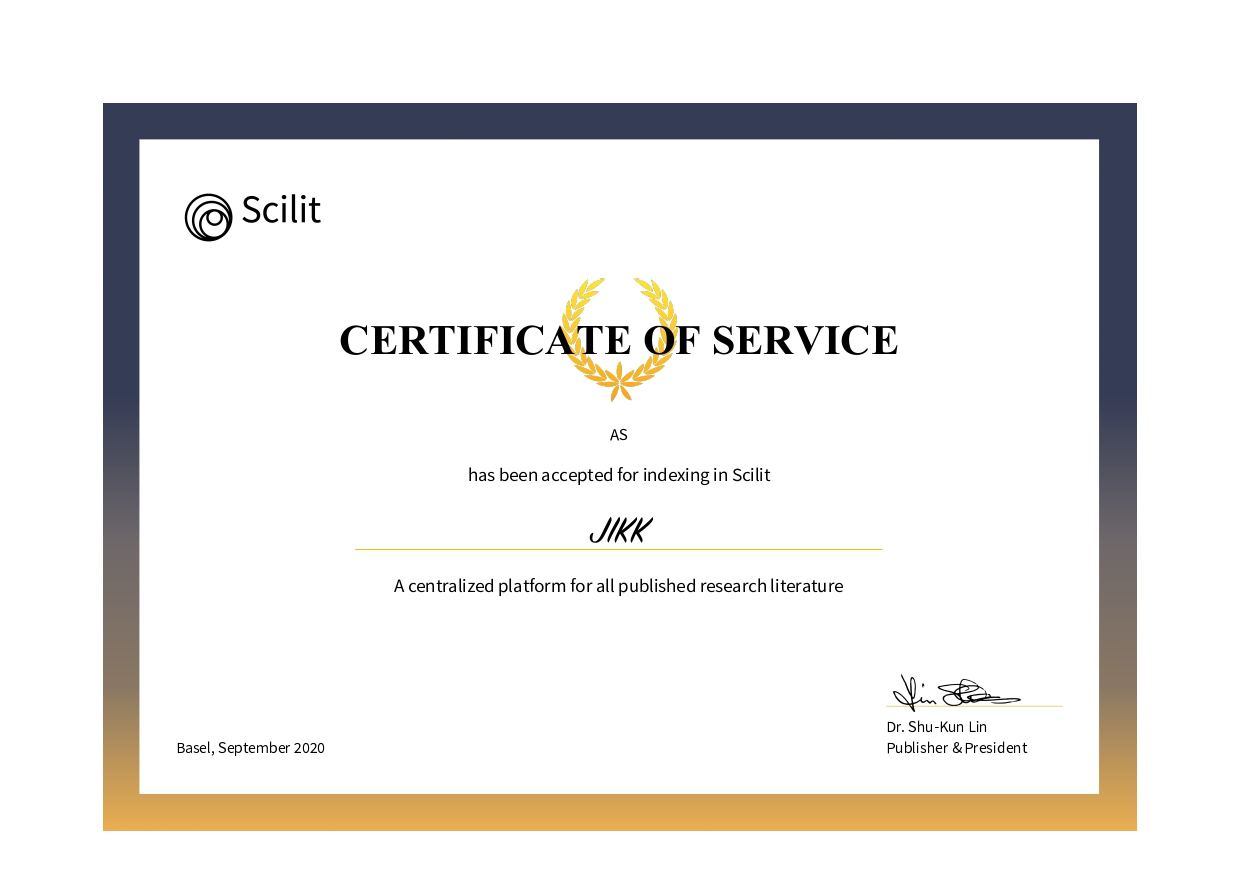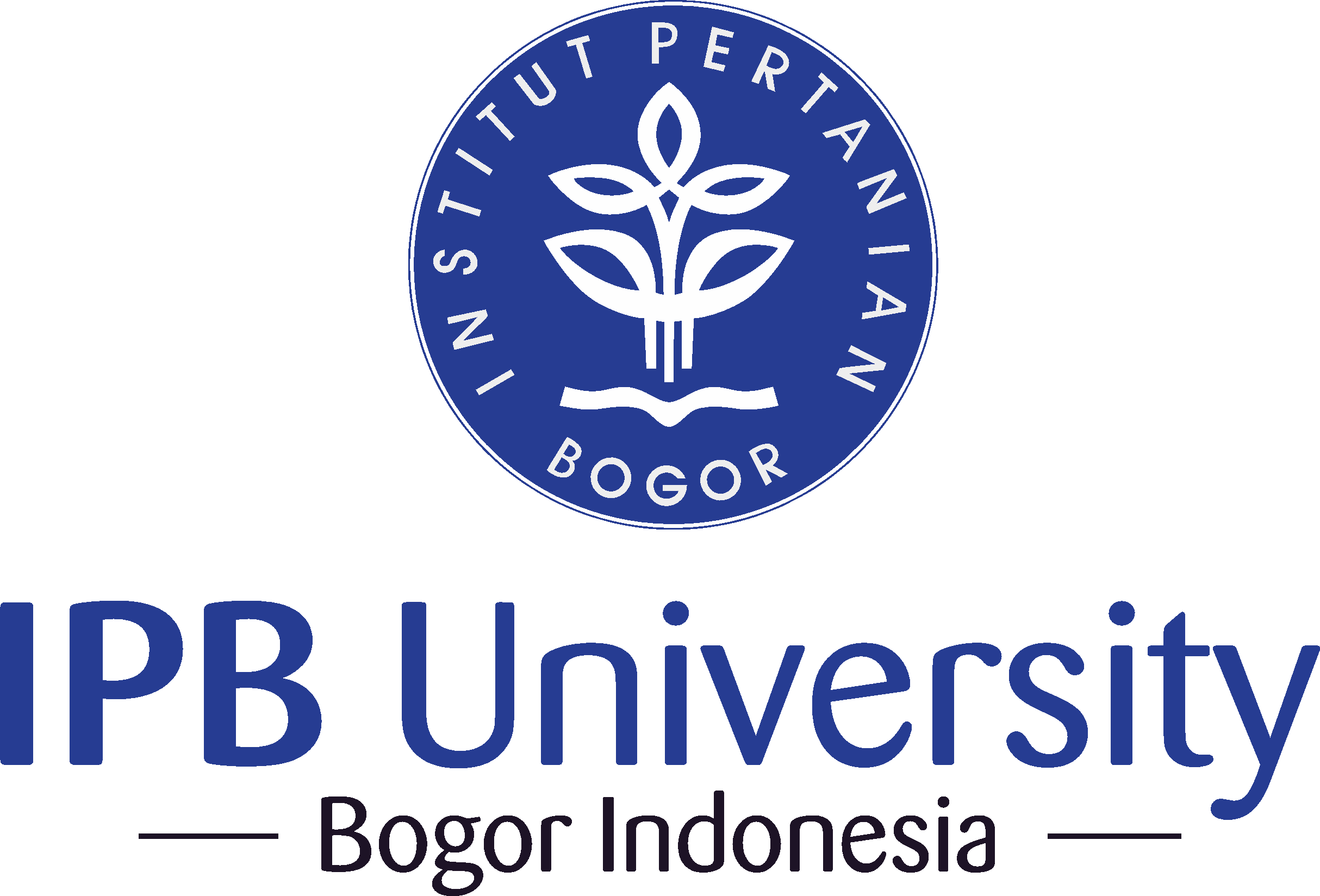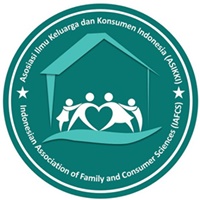ANALISIS RIWAYAT PENGASUHAN PADA TINGKAT POSTTRAUMATIC GROWTH BERBEDA PADA DEWASA MUDA SETELAH TERINFEKSI COVID-19
Abstract
Pandemi Covid-19 memberikan ancaman serius bagi kondisi kesehatan mental pada kelompok dewasa muda, dalam hal ini riwayat pengasuhan diyakini mampu menjelaskan apakah seseorang jadi terpuruk atau justru bertumbuh menjadi pribadi lebih baik, setelah menghadapi situasi krisis. Penelitian ini bertujuan untuk menganalisis riwayat pengasuhan ditinjau dari tingkat posttraumatic growth (PTG) pada dewasa muda setelah terinfeksi Covid-19. Desain mixed method digunakan dengan melakukan pengisian kuisioner Posttraumatic Growth Inventory (PTGI) α=0,971 dan wawancara semi terstruktur terkait riwayat pengasuhan. Diperoleh 204 responden yang berpartisipasi mengisi kuisioner, untuk selanjutnya dipilih masing-masing 4 responden dengan skor PTG relatif tinggi dan rendah untuk diwawancarai lebih lanjut. Hasil analisis deskriptif menemukan bahwa responden rata-rata memiliki skor total PTG yang tinggi (M = 77,02; SD = 15,87). Dari lima dimensi PTG, apresiasi hidup menunjukkan skor paling tinggi (M = 81,09; SD = 17,05) dialami oleh para responden setelah terinfeksi Covid-19 dibandingkan dimensi lainnya. Hasil analisis data kualitatif menggunakan Nvivo-12 mengindikasikan bahwa terdapat pola riwayat pengasuhan yang cenderung berbeda dihayati oleh kelompok responden dengan PTG tinggi dan rendah. Temuan ini dapat menjadi rujukan dalam praktek pengasuhan anak untuk menciptakan individu yang lebih tangguh di masa dewasa.
References
Brockie, T. N., Dana-Sacco, G., Wallen, G. R., Wilcox, H. C., & Campbell, J. C. (2015). The relationship of adverse childhood experiences to PTSD, depression, poly-drug use and suicide attempt in reservation-based native american adolescents and young adults. American Journal of Community Psychology, 55(3–4), 411–421. https://doi.org/10.1007/s10464-015-9721-3
Calhoun, L. G., & Tedeschi, R. G. (2013). Posttraumatic growth in clinical practice. Routledge.
Cava-Tadik, Y., Brown, G. L., & Mangelsdorf, S. C. (2020). Fathers’ satisfaction with physical affection before and after the birth of a new baby: Cross-parent effects and associations with family dynamics. Journal of Family Issues, 41(4), 415–436. https://doi.org/10.1177/0192513X19875779
Chen, Y., Haines, J., Charlton, B. M., & VanderWeele, T. J. (2019a). Positive parenting improves multiple aspects of health and well-being in young adulthood. Nature Human Behaviour, 3,_684–691. https://doi.org/10.1038/s41562-019-0602-x
Chen, Y., Kubzansky, L. D., & VanderWeele, T. J. (2019b). Parental warmth and flourishing in mid-life. Social Science & Medicine, 220, 65–72. https://doi.org/10.1016/j.socscimed.2018.10.026
Długosz, P., & Kryvachuk, L. (2021). Neurotic generation of COVID-19 in eastern europe. Frontiers in Psychiatry, 12, 1-8. https://doi.org/10.3389/fpsyt.2021.654590
Ellena, A. M., Aresi, G., Marta, E., & Pozzi, M. (2021). Post-traumatic growth dimensions differently mediate the relationship between national identity and interpersonal trust among young adults: A study on COVID-19 crisis in Italy. Frontiers in Psychology, 11, 1-10. https://doi.org/10.3389/fpsyg.2020.576610
Fakultas Kedokteran Universitas Indonesia. (2022, July 20). Fenomena long COVID di Indonesia 66,5 persen, ini gejala paling dominan. https://fk.ui.ac.id/infosehat/fenomena-long-covid-di-indonesia-665-persen-ini-gejala-paling-dominan/
Hastuti, D. (2015). Pengasuhan : Teori, prinsip, dan aplikasinya di Indonesia. IPB Press.
Hirata, H., & Kamakura, T. (2018). The effects of parenting styles on each personal growth initiative and self-esteem among Japanese university students. International Journal of Adolescence and Youth, 23(3), 325–333. https://doi.org/10.1080/02673843.2017.1371614
Ishii, Y., Masuya, J., Morishita, C., Higashiyama, M., Inoue, T., & Ichiki, M. (2021). Victimization in childhood mediates the association between parenting quality, stressful life events, and depression in adulthood. Neuropsychiatric Disease and Treatment, 2021(17), 3171–3182. https://doi.org/10.2147/NDT.S323592
Jia, H., Guerin, R. J., Barile, J. P., Okun, A. H., Mcknight-Eily, L., Blumberg, S. J., Rashid Njai, ;, & Thompson, W. W. (2021). National and state trends in anxiety and depression severity scores among adults during the covid-19 pandemic — United States, 2020–2021 (Morbidity and Mortality Weekly Report No. 40). Centers for Disease Control and Prevention. http://doi.org/10.15585/mmwr.mm7040e3external icon
Johnson, C. L., Resch, J. A., Elliott, T. R., Villarreal, V., Kwok, O. M., Berry, J. W., & Underhill, A. T. (2010). Family satisfaction predicts life satisfaction trajectories over the first 5 years after traumatic brain injury. Rehabilitation Psychology, 55(2), 180–187. https://doi.org/10.1037/a0019480
Kim, J. J., Fung, J., Wu, Q., Fang, C., & Lau, A. S. (2017). Parenting variables associated with growth mindset: An examination of three Chinese-heritage samples. Asian American Journal of Psychology, 8(2), 115–125. https://doi.org/10.1037/aap0000064
Kroencke, L., Geukes, K., Utesch, T., Kuper, N., & Back, M. D. (2020). Neuroticism and emotional risk during the COVID-19 pandemic. Journal of Research in Personality, 89, 1-9. https://doi.org/10.1016/j.jrp.2020.104038
León-del-Barco, B., Mendo-Lázaro, S., Polo-del-Río, M.-I., Fajardo-Bullón, F., & López-Ramos, V.-M. (2022). A protective factor for emotional and behavioral problems in children: The parental humor. Children, 9(3), 1-11. https://doi.org/10.3390/children9030404
Liu, A.-N., Wang, L.-L., Li, H.-P., Gong, J., & Liu, X.-H. (2017). Correlation between posttraumatic growth and posttraumatic stress disorder symptoms based on pearson correlation coefficient. Journal of Nervous & Mental Disease, 205(5), 380–389. https://doi.org/10.1097/NMD.0000000000000605
Main, M., Kaplan, N., Cassidy, J., DeMoss, A., Goldwyn, R., Hirsch, T., Littlejohn, L., Strage, A., Tiedemann Mary Ainsworth, R., Bowlby, J., & Oster, H. (1985). Security in infancy, childhood, and adulthood : A move to the level of representation. Monographs of the Society for Research in Child Development, 50(1/2), 66–104. https://doi.org/10.2307/3333827
Nakao, K., Kaishi, J., Tatsuta, K., Katayama, H., Iwase, M., Yorifuji, K., & Takeda, M. (2000). The influences of family environment on personality traits. Psychiatry and Clinical Neurosciences, 54(1),_91–95. https://doi.org/10.1046/j.1440-1819.2000.00642.x
Novianti, N., Latifah, M., & Hernawati, N. (2018). Mengoptimalkan faktor diri dan keluarga dalam prestasi akademik remaja. Jurnal Ilmu Keluarga & Konsumen, 11(1), 60–73. https://doi.org/10.24156/jikk.2018.11.1.60
Pantjoro, T. H. (2020). Pandemi COVID-19, disrupsi bonus demografi, dan ketahanan nasional. Jurnal Kajian Lembaga Ketahanan Nasional Republik Indonesia, 9(2), 83–100. https://doi.org/10.55960/jlri.v9i2.393
Pasaribu, R. M., Hastuti, D., & Alfiasari. (2013). Gaya pengasuhan permisif dan rendahnya sosialisasi nilai dalam keluarga berisiko terhadap penurunan karakter remaja. Jurnal llmu Keluarga & Konsumen, 6(3), 163–171. https://doi.org/10.24156/jikk.2013.6.3.163
Polit, D., & Hungler, B. (1999). Nursing research: Principle and method (6th ed.). Lippincott Company.
Pratiwi, N. L. T., Tirtayani, L. A., Ganing, N. N. (2020). Phenomenology study of early childhood grandparenting in Bali. Journal of Psychology and Instruction, 4(2), 35–43. https://doi.org/10.23887/jpai.v4i2.25385
Prieto-Ursúa, M., & Jódar, R. (2020). Finding meaning in hell. The role of meaning, religiosity and spirituality in posttraumatic growth during the coronavirus crisis in Spain. Frontiers in Psychology, 11, 1–8. https://doi.org/10.3389/fpsyg.2020.567836
Public Health Emergency Operation Center. (2023). Peta sebaran. Kementerian Kesehatan Republik Indonesia. https://covid19.go.id/id/peta-sebaran
Quan, L., Lü, B., Sun, J., Zhao, X., & Sang, Q. (2022). The relationship between childhood trauma and post-traumatic growth among college students: The role of acceptance and positive reappraisal. Frontiers in Psychology, 13, 1–9. https://doi.org/10.3389/fpsyg.2022.921362
Puspitawati, H., & Herawati, T. (2013). Metode penelitian keluarga. IPB Press.
Rachman, Y. A., Sunarti, E., & Herawati, T. (2020). Husband-wife interaction, parent-child interaction, peer interaction and teenager’s resilience. Jurnal Ilmu Keluarga & Konsumen, 13(1), 1–12. https://doi.org/10.24156/jikk.2020.13.1.1
Riany, Y. E., & Morawska, A. (2021). Financial and work burden, psychosocial functioning, and family interactions during the COVID-19 pandemic in Indonesia: Effects on child outcomes. Child Psychiatry & Human Development, 54, 340–351. https://doi.org/10.1007/s10578-021-01251-1
Tedeschi, R. G., & Calhoun, L. G. (1996). The posttraumatic growth inventory: Measuring the positive legacy of trauma. Journal of Traumatic Stress, 9(3), 455–471. https://doi.org/10.1007/BF02103658
Urban, T. H., Friedman, D., Kaskas, M. M., Caruso, A. J., Canenguez, K. M., Rotter, N., Wozniak, J., & Basu, A. (2022). Brief report of protective factors associated with family and parental well-being during the COVID-19 pandemic in an outpatient child and adolescent psychiatric clinic. Frontiers in Psychology, 13, 1–9. https://doi.org/10.3389/fpsyg.2022.883955
Vazquez, C., Valiente, C., García, F. E., Contreras, A., Peinado, V., Trucharte, A., & Bentall, R. P. (2021). Post-traumatic growth and stress-related responses during the COVID-19 pandemic in a national representative sample: The role of positive core beliefs about the world and others. Journal of Happiness Studies, 22, 2915–2935. https://doi.org/10.1007/s10902-020-00352-3
Villatoro, A. P., Wagner, K. M., Salgado de Snyder, V. N., Garcia, D., Walsdorf, A. A., & Valdez, C. R. (2022). Economic and social consequences of COVID-19 and mental health burden among Latinx young adults during the 2020 pandemic. Journal of Latinx Psychology, 10(1), 25–38. https://doi.org/10.1037/lat0000195
Winurini, S. (2020). Permasalahan kesehatan mental akibat pandemi COVID-19. Kajian Singkat Terhadap Isu Aktual dan Strategis, 12(15), 13–19. http://berkas.dpr.go.id/puslit/files/info_singkat/Info%20Singkat-XII-15-I-P3DI-Agustus-2020-217.pdf?1695932529
Wu, X., Kaminga, A. C., Dai, W., Deng, J., Wang, Z., Pan, X., & Liu, A. (2019). The prevalence of moderate-to-high posttraumatic growth: A systematic review and meta-analysis. Journal of Affective Disorders, 243, 408–415. https://doi.org/10.1016/j.jad.2018.09.023
Xie, C. S., & Kim, Y. (2022). Post-traumatic growth during COVID-19: the role of perceived social support, personality, and coping strategies. Healthcare, 10, 1–17. https://doi.org/10.3390/healthcare10020224
Zhang, C. (2015). Parents, grandparents and nanny the new care triangle in urban China among families with infants [Doctoral dissertation, Harvard University]. DASH. http://nrs.harvard.edu/urn-3:HUL.InstRepos:33797224
Copyright (c) 2023 Jurnal Ilmu Keluarga & Konsumen

This work is licensed under a Creative Commons Attribution-ShareAlike 4.0 International License.
Authors submitting manuscripts should understand and agree that copyright of manuscripts published are held Jurnal Ilmu Keluarga dan Konsumen. The statement to release the copyright to Jurnal Ilmu Keluarga dan Konsumen is stated in Copyright Release Form. Copyright encompass exclusive rights to reproduce, to distribute, and to sell any part of the journal articles in all form and media. The reproduction of any part of this journal is allowed with a written permission from Jurnal Ilmu Keluarga dan Konsumen.

